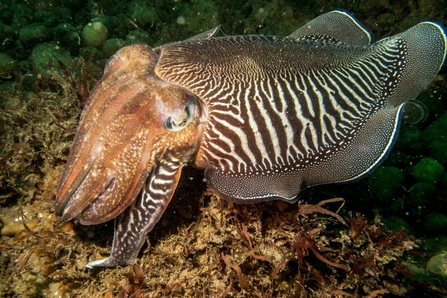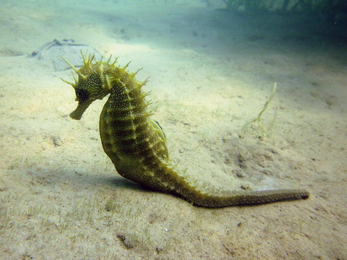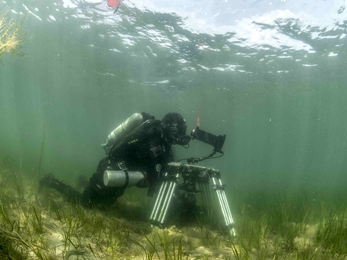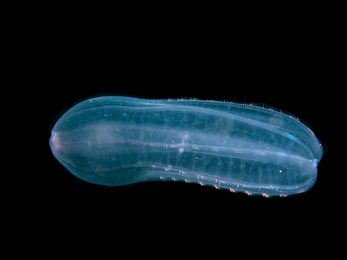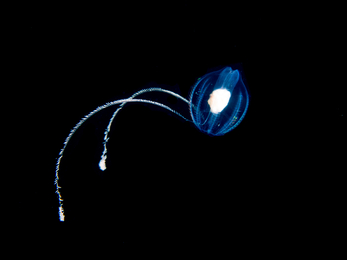I have always thought it a shame that most people in the British Isles tend to know more about the marine wildlife living in tropical seas, clown fish and the like, than what lives in our own coastal waters. Research has shown that many British people believe our seas to be grey, muddy and barren, which couldn’t be further from the truth. Wild Isles is the first big budget natural history series to showcase our very own marine wildlife – and wow!
I am so pleased that cuttlefish were included in the series. These are one of my favourite marine animals but don’t get the attention of their close relatives squid and octopus. They are completely amazing, colour-changing, intelligent creatures and are superb ambush predators, and yet they live such short lives, breeding only once before dying. Most people only know them from the white ‘bone’ washed ashore after death. I had a very memorable encounter with one individual that spent a whole dive following me around, clearly trying to communicate by displaying a dazzling lightshow of colours and patterns across its back. If only I could speak cuttle!
In summer, cuttlefish eggs sometimes get washed ashore onto beaches. The little clusters of black eggs are called 'sea grapes' as that’s what they resemble. At Dorset Wildlife Trust’s Fine Foundation Wild Seas Centre, we have been lucky enough to hatch cuttlefish eggs in our aquarium when they have been rescued from the beach. The pea-sized babies are able to change colour and to camouflage immediately and it has been a privilege to watch these superb predators sneaking up and seizing prey even at that tiny size. Of course they need to grow quickly as their lives are short.
For these intelligent molluscs to be showcased on Wild Isles, and their tragic plight and dramatic decline highlighted is incredible and will hopefully result in some conservation gains to restore their populations to what they once were.


